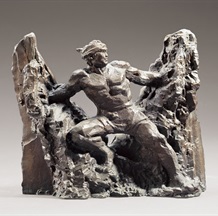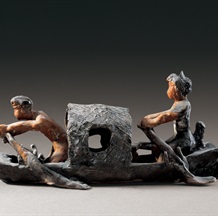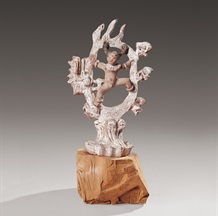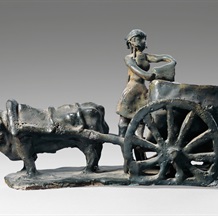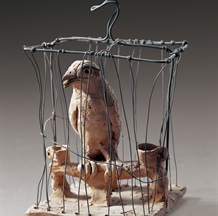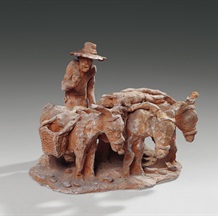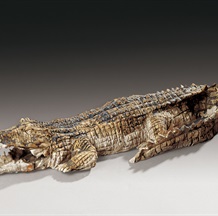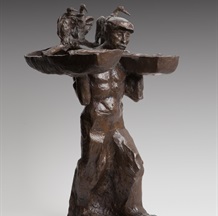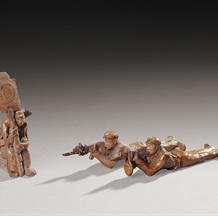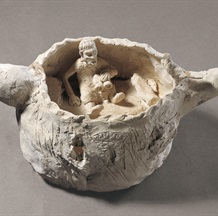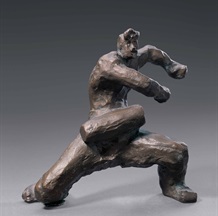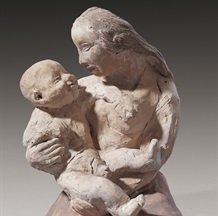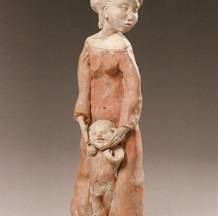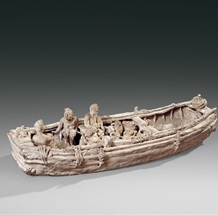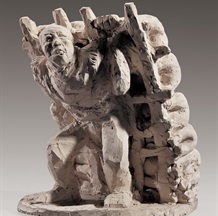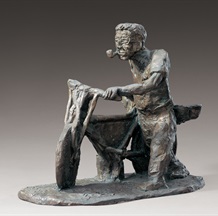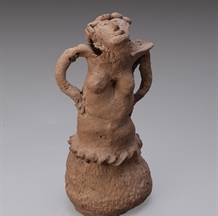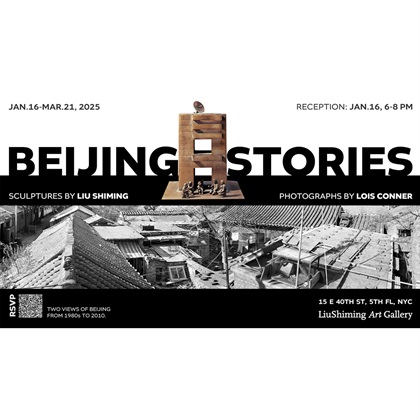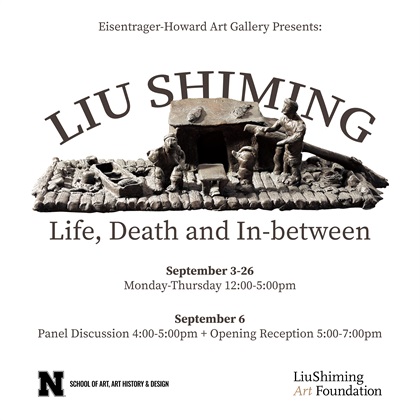Mr. Liu Shiming was one of the first group of students of the Sculpture Department of the Central Academy of Fine Arts. He was recruited by the Chinese art master Xu Beihong himself, and studiedwith the guidance of famous sculptors, such as Wang Linyi, Hua Tianyou and so on. His graduation work, “Measuring the Land” was collected by the National Museum of Czechoslovak (now the Czech National Museum). In 1952, after his graduation, he experienced the creation process for the sculpture of the Monument to the People’s Heroes. In 1950s, he participated in the creation of ““Splitting the Mountains to Let the Water Flow”, “Workers Holding Torch in Workers Stadium”, group sculpture “Shared Labor of Officers and Soldiers” in Military Museum of the Chinese People’s Revolution and “Working Underwater at the Bridgehead of Yangtze River Bridge” while he worked at China Sculpture Factory. He has a strong affection for folk art, drawing on ancient pottery techniques to reflect contemporary life. In the creative process, he pays attention to the use of “consistent” methods. That is to finish the work with fast and consistent movements to achieve the effect of one go. Based on neutral, friendly images of people and lovely scenes, his works are full of nostalgia and love for the traditional Chinese cultural spirit and contemporary life.

Artist Liu Shiming in Exhibition view
Mr. Liu Shiming has been through ups and downs in his life. Indifferent to fame and wealth, he iswillingly to be in honest poverty. He suffered from poliomyelitis since childhood and his leg became disabled, but he never gave in to the disease. At the golden age of his career, in order to pursue his beloved customs and folk art in Central Plains, he went to Henan province and Hebei province alone and worked there for 18 years. Afterwards, he worked at the restoration department in National Museum of Chinese History for 7 years. During this period, physical mobility impairment and hard living conditions brought him unimaginable difficulties in life and artistic creation, but he persisted in his career with indomitable and immortal passion that ordinary people could not achieve. Art, for him, has nothing to do with fame and profit. He does not make art for his reputation, nor for profit, and does not cater to popular trends of thoughts and fashion. He is faithful to his eyes and heart, expresses his feelings and emotions, and has devoted himself fully to sculpture for decades.In the cultural pattern of China in 20th century, sculpture was in a relatively weak position. Seemingly, it did not form a powerful force that can have an important impact on contemporary life. However, for a sculptor, what counts is to convey his thoughts and feelings through his works, reflect his life and fate, show his concern and attitude towards the world. These may not be achieved by coincidence. Therefore, the key to the point is to live and think as other people as well as keeping the critical thinking about the value systems. Many sculptors, represented by Mr. Liu Shiming, have gone out ofthe siege of the formal with persevering hearts. It can be seen that they use sculpture as a way to express their realistic concern as well as their values and effort.


